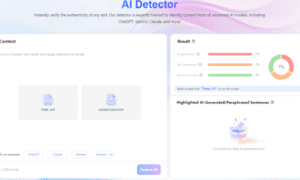Are you feeling overwhelmed by the deluge of emails? Frustrated with spending hours on repetitive tasks that could easily be automated? Take a deep breath, because the era of virtual assistants in the workplace has arrived to provide a solution. In this article, we will delve into the captivating realm of chatbots and conversational AI, investigating how these intelligent systems are reshaping businesses and revolutionizing our professional lives. Prepare to uncover how virtual assistants are simplifying workflows, elevating productivity, and laying the groundwork for an era where human-AI collaboration flourishes like never before.
Introduction to Chatbots and Conversational AI
As the digital landscape continues to expand, so do our interactions with customer service representatives. With the ascent of chatbots and conversational AI, companies can offer round-the-clock support to their customers, sans the need for human intervention.
Chatbots are software programs designed to emulate human conversations, adept at comprehending natural language and responding appropriately. Conversational AI involves the integration of artificial intelligence (AI) to enable fluid dialogues between humans and chatbots.
The employment of chatbots and conversational AI in the professional domain brings forth numerous advantages. For businesses, these technologies can curtail operational expenses by automating customer service functions. Employees benefit from time freed from routine tasks, enabling them to concentrate on more strategic endeavors. Meanwhile, customers gain access to a convenient avenue for query resolution and issue escalation.
Given the evident advantages of chatbots and conversational AI, it is no surprise that their prevalence in the workplace is surging. This article will examine the various ways in which businesses are currently leveraging these technologies.
Benefits of Integrating Chatbots in Work Settings
Conversational AI, or chatbots, is gaining traction in work environments as a means to augment efficiency and efficacy. Here are some of the notable advantages of incorporating chatbots into workplaces:
- Automation of repetitive tasks through chatbots.
- Provision of 24/7 employee support via chatbots.
- Enhancement of inter-team communication facilitated by chatbots.
- Reduction in the necessity for in-person meetings due to chatbot-driven exchanges.
- Expedited and efficient collection of information from employees through chatbots.
- Delivery of personalized customer service utilizing chatbots.
- Streamlining of processes and time-saving via chatbot interventions.
- Mitigation of human errors, including typographical or trivial mistakes, through chatbots.
- Swift and precise addressing of frequently asked questions by chatbots.
- Reinforcement of data security by employing chatbots as an additional layer of protection.
Challenges in Implementing Chatbots
The introduction of chatbots entails several challenges that necessitate consideration prior to implementation. These challenges can be categorized into technical and design aspects.
Technical hurdles encompass ensuring the chatbot’s comprehension of human inputs, appropriate processing of these inputs, and generation of human-friendly responses. Design-related challenges pertain to cultivating an engaging and relatable personality for the chatbot, while also ensuring seamless and comprehensible conversational flows.
Both types of challenges demand careful deliberation during the planning stages of a chatbot implementation project. By acknowledging and addressing these challenges from the outset, a solid foundation for successful chatbot integration can be established.
Business Advantages from Virtual Assistant Adoption
The adoption of virtual assistants offers several benefits to businesses. By automating mundane tasks, companies can liberate employees’ time for more strategic undertakings. Moreover, virtual assistants contribute to enhanced customer service and reduced operational costs.
A pivotal benefit of virtual assistant utilization is the automation of repetitive tasks, affording employees the opportunity to concentrate on strategic endeavors. For instance, if customer service representatives are investing substantial time addressing recurring queries, a chatbot can be employed to manage such interactions. This grants customer service personnel the ability to allocate their efforts toward more complex problem-solving.
Beyond time allocation, virtual assistants amplify customer service quality. By delivering rapid and accurate responses to customer inquiries, chatbots preemptively address issues before they escalate. Additionally, chatbots can proactively reach out to customers with updates on new products or services, heightening customer satisfaction and loyalty.
The business realm also reaps financial benefits through virtual assistant adoption. Automating functions such as customer service and sales leads to reductions in labor expenses. Incorporating chatbots in marketing and lead generation can also curtail advertising expenditures. Virtual assistant integration provides an array of advantages, catering to enterprises of all sizes.
Guidelines for Establishing and Managing Virtual Assistant Systems
Several guidelines facilitate the establishment and management of virtual assistant systems.
- Articulating the tasks assigned to the virtual assistant is imperative to allocate suitable resources and ensure task completion efficacy.
- Forging clear channels of communication between the virtual assistant and the team is essential. This guarantees shared awareness of the virtual assistant’s tasks and allows for timely feedback exchange.
- Continuous monitoring of the virtual assistant system’s performance is crucial. This practice identifies areas for enhancement and keeps pace with advancements in chatbot and conversational AI technologies.
Illustrative Instances of Corporate Virtual Assistant Utilization
In today’s business landscape, companies are fervently pursuing avenues for cost reduction and operational enhancement. One method gaining prominence is the integration of virtual assistants. These digital entities, also known as chatbots, replicate human conversations and are gaining traction as tools for tasks traditionally executed by human staff, including customer service and appointment scheduling.
Diverse approaches have emerged in companies’ utilization of chatbots. Businesses oriented toward customers, such as hotels and retailers, leverage chatbots to deliver continuous customer support. This liberates human staff for other responsibilities and ensures prompt assistance for customers at all hours.
Chatbots are also proving their worth in employee training. By furnishing guidance and answering questions, chatbots facilitate training without impinging on employees’ productive hours. This is particularly beneficial for large enterprises or those with frequent workforce changes.
Some businesses are harnessing chatbots as sales aids. By furnishing product and service information, as well as answering queries, chatbots expedite the sales process.
As organizations embrace virtual assistants, these tools are being deployed in diverse capacities, including customer service, employee training, and sales facilitation. As technology advances and more enterprises adopt virtual assistants, this trend is poised to intensify.
Conclusion
The ascent of virtual assistants in professional contexts underscores the enduring relevance of automation and AI. As businesses aim to enhance their operational precision, increase efficiency, reduce costs, and elevate customer service, virtual assistants are positioned to have a crucial impact. Chatbots and conversational AI present a unique opportunity for businesses to offer personalized customer experiences while minimizing manual labor. This is an exciting juncture for professionals engaged in this arena, as we delve into innovative ways to harness the potential of these technologies.”



































